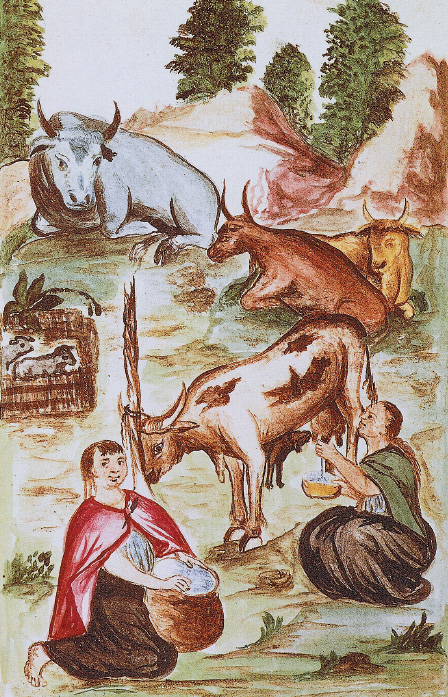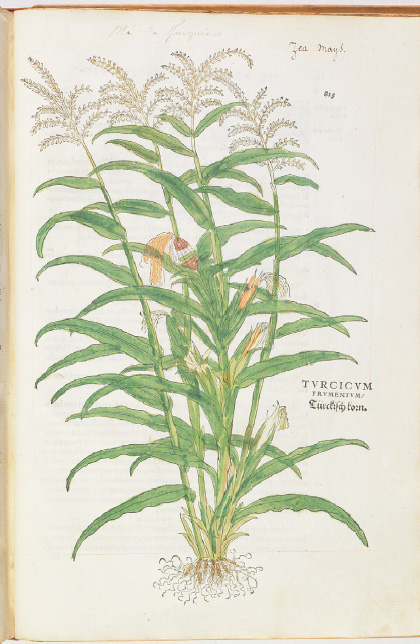A History of Western Society: Printed Page 450
LIVING IN THE PAST
Foods of the Columbian Exchange

Many people are aware of the devastating effects of European diseases on peoples of the New World and of the role of gunpowder and horses in the conquest of native civilizations. They may be less aware of how New World foodstuffs transformed Europeans’ daily life.
Prior to Christopher Columbus’s voyages, many common elements of today’s European diet were unknown in Europe. It’s hard to imagine Italian pizza without tomato sauce or Irish stew without potatoes, yet tomatoes and potatoes were both unknown in Europe before 1492. Additional crops originating in the Americas included many varieties of beans, squash, pumpkins, avocados, and peppers.
One of the most important of such crops was maize (corn), first introduced to Europe by Columbus in 1493. Because maize gives a high yield per unit of land, has a short growing season, and thrives in climates too dry for rice and too wet for wheat, it proved an especially important crop for Europeans. By the late seventeenth century the crop had become a staple in Spain, Portugal, southern France, and Italy, and in the eighteenth century it became one of the chief foods of southeastern Europe. Even more valuable was the nutritious white potato, which slowly spread from west to east — to Ireland, England, and France in the seventeenth century, and to Germany, Poland, Hungary, and Russia in the eighteenth, contributing everywhere to a rise in population. Ironically, the white potato reached New England from old England in the early eighteenth century.

Europeans’ initial reaction to these crops was often fear or hostility. Adoption of the tomato and the potato was long hampered by the belief that they were unfit for human consumption and potentially poisonous. Both plants belong to the deadly nightshade family, and both contain poison in their leaves and stems. It took time and persuasion for these plants to win over tradition-minded European peasants, who used potatoes mostly as livestock feed. During the eighteenth-century Enlightenment, scientists and doctors played an important role in popularizing the nutritive benefits of the potato.
Columbus himself contributed to misconceptions about New World foods when he mistook the chili pepper for black pepper, one of the spices he had hoped to find in the Indies. The Portuguese quickly began exporting chili peppers from Brazil to Africa, India, and Southeast Asia along the trade routes they dominated. The chili pepper arrived in North America through its place in the diet of enslaved Africans.
European settlers introduced various foods to the native peoples of the New World, including rice, wheat, lettuce, and onions. Perhaps the most significant introduction to the diet of Native Americans came via the meat and milk of the livestock that the early conquistadors brought with them, including cattle, sheep, and goats.
The foods of the Columbian exchange traveled a truly global path. They provided important new sources of nutrition to people all over the world, as well as creating new and beloved culinary traditions. French fries with ketchup, anyone?

QUESTIONS FOR ANALYSIS
Question
Why do you think it was so difficult for Europeans to accept new types of food, even when they were high in nutritional quality?
Question
What do the painting and illustrations shown here suggest about the importance of the Columbian exchange?
Question
List the foods you typically eat in a day. How many of them originated in the New World, and how many in the Old World? How does your own life exemplify the outcome of the Columbian exchange?